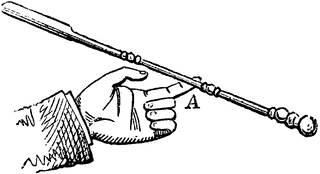EQUILLIRIUM
EQUILLIRIUM
Centre of gravity
The force of gravity normally tends to attract all bodies towards the centre of the earth. The point of application of the resultant force due to the earth’s gravitational pull is referred to as the centre of gravity of the body. This is the point at which the whole weight of the body is concentrated.
Centre of gravity
It is at this point where the body can be balanced. The centre of gravity of a body is also its centre of mass.

The centre of gravity of a regular object can be obtained through geometrical construction as it is its geometrical centre.


CENTRE OF GRAVITY FOR IRREGULAR OBJECTS.
For an irregular object the centre of gravity can be located through the following steps:
- Three holes are made at different points along the edge of the object.
- The object is then suspended in turn using the holes and a plumb line attached to trace the vertical line through its centre of gravity.
- The point of intersection of the three lines will be the centre of gravity of the irregular object.

Stability and equilibrium
Stability refers to the state of rest of a body while equilibrium is the state of balance of a body. When a body is in equilibrium, it stays in that position as long as there is no external influence on it.
There are three states of equilibrium namely:
- Stable equilibrium
- Unstable equilibrium
- A neutral equilibrium
These states can be illustrated by the following set up:
Fig. i Fig. ii Fig. iii

Fig. i Fig. ii Fig. iii
a) Stable equilibriumWhen the cone is given a slight displacement as shown in fig. i, it is observed that the line through its centre of gravity still passes through the base area. The centre of gravity of the cone is also raised. When the force is withdrawn, the object returns to its original position without toppling. The body is said to have a stable equilibrium.
In modern buses, the luggage compartments are situated in the lower part so as to lower the position of the centre of gravity and hence increased stability.
b) Unstable equilibrium
In fig. ii, the cone has been balanced on its tip. When slightly displaced, the vertical line through its centre of gravity will fall outside its base as shown above. When the force is withdrawn, the cone will not be able to regain its original position and is thus said to be in an unstable equilibrium.
Most buses which carry heavy luggage on the upper carrier are always unstable as their centres of gravity are always raised.
c) Neutral equilibrium
In fig. iii, the cone has been placed on its side and can therefore roll over. However, this does not change the position of its centre of gravity. Hence the body is said to be in a state of neutral equilibrium.
Factors affecting stability
- Area of the base
A body with a larger base area will have the line through its centre of gravity passing through its base even when tilted through a larger angle. Hence the larger the base area the more stable a body is.
- The position of the centre of gravity
A body having its centre of gravity very low is more stable compared to one with a raised centre of gravity. The centre of gravity of a body can be lowered by making its base heavier.
Applications of stability
- Buses are built using lighter materials on the upper part but heavy ones on the lower part in order to lower their centres of gravity. The luggage is also put in the compartments below the passenger seats. Both these are meant to enhance stability of the bus.
- Racing cars have wider wheel bases. They are also built using heavy metals at their bases. These lower their centres of gravity thereby making them more stable and can therefore move round corners at relatively high speeds without overturning.
- A person carrying a bucket of water normally leans on the opposite side in order to adjust the position of his centre of gravity until a state of balance is achieved.